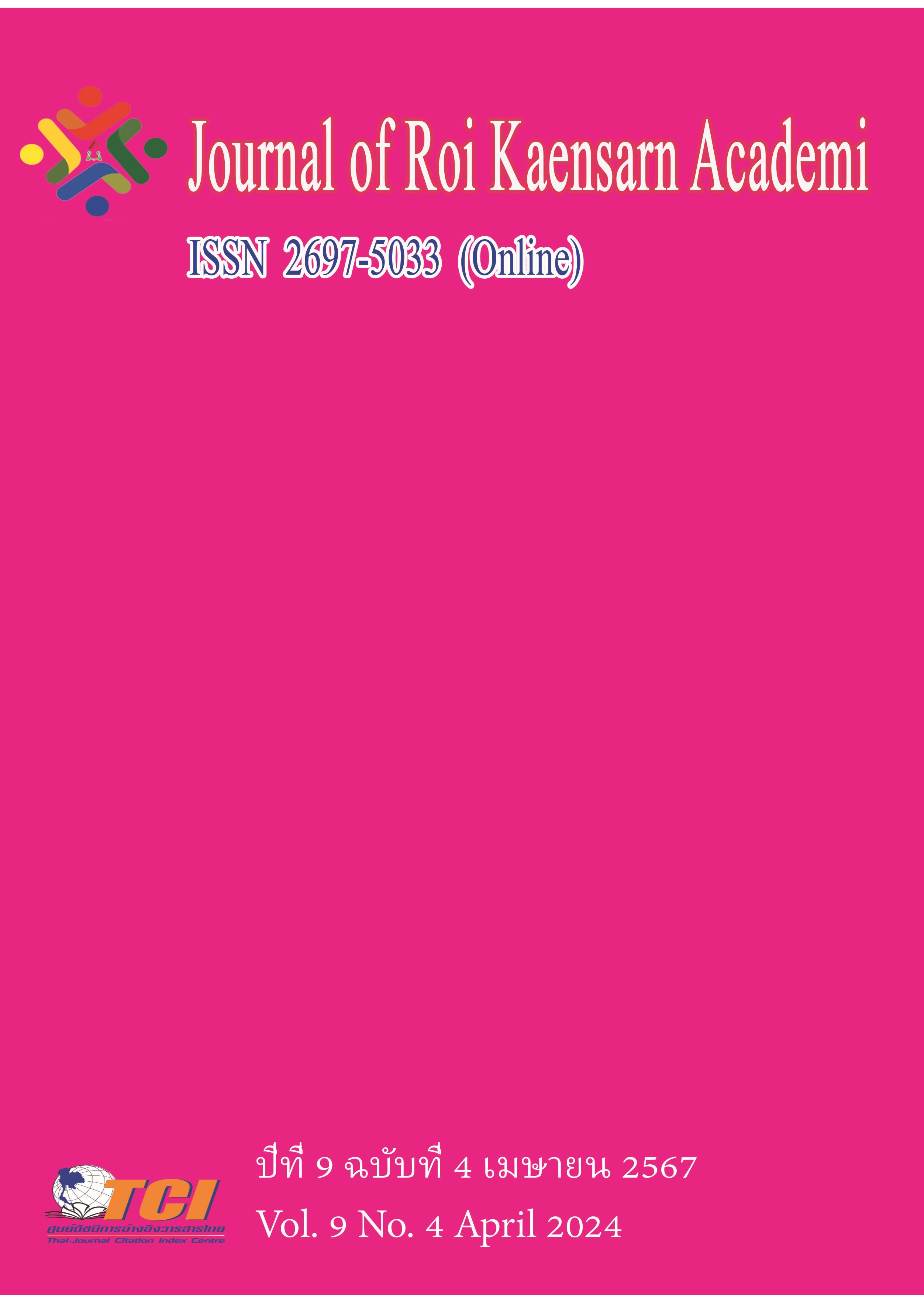กระแสของการคิดอย่างมีวิจารณญาณ
Main Article Content
บทคัดย่อ
ความสามารถในการประเมิน และสังเคราะห์ข้อมูลเพื่อความเข้าใจอย่างลึกซึ้ง เป็นคำนิยามของการคิดอย่างมีวิจารณญาณ ซึ่งเป็นลักษณะที่ช่วยส่งเสริมความสามารถในการตัดสินใจ การใช้เหตุผลเชิงตรรกะ และความสามารถในการแก้ไขปัญหา การคิดอย่างมีวิจารณญาณมีความสำคัญทั้งในบริบททางวิชาการและการชีวิตประจำวัน ช่วยให้เกิดความเข้าใจในสถานการณ์ที่ยากลำบาก ตั้งคำถามกับข้อสันนิษฐาน และมีส่วนสำคัญต่อความก้าวหน้าและนวัตกรรม
ดังนั้น บทความวิชาการนี้มีวัตถุประสงค์เพื่อนำเสนอกระแสของการคิดอย่างมีวิจารณญาณ ในประเด็นที่หลากหลาย ไม่ว่าจะเป็น มุมมองต่อการจัดการเรียนการสอนการคิดอย่างมีวิจารณญาณของประเทศไทยและประเทศนิวซีแลนด์ ความสัมพันธ์และความสำคัญระหว่างการคิดอย่างมีวิจารณญาณ ต่อความก้าวหน้าทางเทคโนโลยี สื่อดิจิทัล และโลกของการทำงาน
Article Details
เอกสารอ้างอิง
ชนิพรรณ ชาติเสถียรและคณะ. (2560). การสร้างวินัยสำหรับเด็กปฐมวัย. กรุงเทพมหานคร: บริษัท พลัสเพลส จำกัด.
ประพันธ์ศิริ สุเสารัจ. (2556). การพัฒนาการคิด. กรุงเทพมหานคร: 9119 เทคนิคพริ้นติ้ง.
พระมหาวรเดชา อคฺคเตโช. (2558). ทางสายกลางในฐานะเป็นเครื่องมือพัฒนาเศรษฐกิจในปัจจุบัน. ออนไลน์. สืบค้น 20 ตุลาคม 2566. แหล่งที่มา: https://www.mcu.ac.th/article/detail/14292
พิชัย ระเวงวัน. (2564). การพัฒนาสื่อแอบพลิเคชั่นการเรียนรู้เสริมทักษะคำศัพท์ 3 ภาษาสำหรับเด็กปฐมวัย บนสมาร์ทโฟน. วารสารวิชาการและวิจัย มหาวิทยาลัยภาคตะวันออกเฉียงเหนือ. 11 (2), 167-180.
สมเด็จพระพุทธโฆษาจารย์ (ป. อ. ปยุตฺโต). (2561). ทำอย่างไรจะให้เชื่อเรื่องกรรม. ออนไลน์. สืบค้น 20 ตุลาคม 2566. แหล่งที่มา: https://www.watnyanaves.net/th/book-reading/193/2
สริญญา มารศรี. (2562). การพัฒนาทักษะการคิดอย่างมีวิจารณญาณ ในศตวรรษที่ 21. วารสาร มจร นครน่านปริทัศน์. 3 (2), 105-122.
สสวท. (2560). หลักสูตรวิทยาศาสตร์ คณิตศาสตร์ และเทคโนโลยี (ฉบับปรับปรุง พ.ศ. 2560) ตามหลักสูตรแกนกลางการศึกษาขั้นพื้นฐาน พุทธศักราช 2551. ออนไลน์. สืบค้น 20 ตุลาคม 2566. แหล่งที่มา: https://www.ipst.ac.th/curriculum
สํานักงานเลขาธิการสภาการศึกษา กระทรวงศึกษาธิการ. (2560). แผนการศึกษาแห่งชาติ พ.ศ.2560 – 2579. กรุงเทพมหานคร: บริษัทพริกหวานกราฟฟิค จํากัด.
Chareonwongsak, K., Ramingwong, S., & Sujivanit, P. (2020). A Framework for Integrating Digital Media Literacy into the Thai Educational System. International Journal of Learning, Teaching, and Educational Research. 19 (10), 146-160.
Code Genius Academy. (2023). Digital literacy ทักษะการรู้ดิจิทัล กุญแจสู่การเติบโตที่ดีของเด็กยุคใหม่. ออนไลน์. สืบค้นเมื่อ 25 ตุลาคม 2566. แหล่งที่มา: https://codegeniusacademy. com/digital-literacy/
Facione, P. (2015) Critical Thinking: What It Is and Why It Counts. Online. Retrieved October 13, 2023. from: https://www.researchgate.net/publication/251303244_Critical_
Thinking_What_It_Is_and_Why_It_Counts
Hobbs, R., & Jensen, A. (2020). The past, present, and future of media literacy education. Journal of Media Literacy Education. 12 (1), 1-11.
Jones, E. A. & Ratcliff, G. (1993). Critical thinking skills for college students. National Center on Postsecondary Teaching, Learning, and Assessment, University Park, PA. (Eric Document Reproduction Services No. ED 358 772)
Karpati, A. (2011). Digital Literacy in Education. Moscow: UNESCO Institutefor Information Technologies in Education (IITE).
Livingstone, S., Cabello, P., & Vandoninck, S. (2017). Multitasking and metacognition: The role of intrinsic and extrinsic media multitasking motives in media multitasking behaviors. Journal of Media Psychology. 29 (1), 3-14.
Santamaria, M. L. (2022). A Mixed Methods Study on Early Childhood Services’ Touchscreen Tablet use and non-usein New Zealand. Young Children’s information CommunicationTechnology (ICT).
McNaughton, S., & Jesson, R. (2023). How a Digital Intervention in Schools Contributed to Students’ Social and Emotional Skills, and Impacted Writing. Online. Retrieved October 13, 2023. from: https://link.springer.com/article/10.1007/s40841-023-00296-1
Meade, A. (2005). Catching the Waves: Innovation in Early Childhood Education. New Zealand : NZCER Press
Ministry of Education, New Zealand. (2007). The New Zealand Curriculum. Wellington: Ministry of Education, New Zealand.
Ministry of Education, New Zealand. (2017). Digital Technologies: Hangarau Matihiko in the New Zealand Curriculum. Online. Retrieved October 13, 2023. from: https://nzcurriculum.tki.org.nz/The-New-Zealand-Curriculum/Digital-Technologies.
Ministry of Education, New Zealand. (2019). Digital Technologies for All Equity Fund. Online. Retrieved October 13, 2023. from: https://education.govt.nz/school/funding-and-financials/funding/funding-for-digital-technologies-for-all/.
Monash University (2019). What is critical thinking?. Online. Retrieved October 20, 2023 from https://www.monash.edu/student-academic-success/enhance-your- thinking/critical-thinking/what-is-critical-thinking
New Zealand Government. (2020). Ethnic group summaries reveal New Zealand's multicultural make-up. Online. Retrieved October 21, 2023 from https://www.stats
.govt.nz/news/ethnic-group-summaries-reveal-new-zealands-multicultural-make-up/
Pariser, E. (2011). The filter bubble: What the Internet is hiding from you. NewYork: Penguin Press.
Pennycook, G., & Rand, D. G. (2020). Fighting misinformation on social media using crowdsourced judgments of news source quality. Proceedings of the National Academy of Sciences. 117 (6), 2775-2783.
Piaget, J. (2003). The Psychology of Intelligence. Taylor & Francis e-Library.
Rameka, L. (2016). Whakapapa: Culturally valid assessment in early childhood. Early Childhood Folio. 16 (2), 33-37
Ribble, M. (2015). Digital Citizenship in Schools: Nine Elements All Students Should Know. (3rd ed.). Washington DC: International Society for Technology in Education.
Rosen, L. (2010). ReWired: Understanding the iGeneration and the Way TheyLearn. New York, NY: Palgrave Macmillan.
Rowe, H. (1994). Critical Thinking. Online. Retrieved October 13, 2023. from: https://www.nzcer.org.nz/nzcerpress/set/articles/critical-thinking
Wade, C. (1995). Using writing to develop and assess critical thinking. Teaching of Psychology. 22 (1), 24-28.
Warschauer, M., & Matuchniak, T. (2010). New technology and digital worlds: Analyzing evidence of equity in access, use, and outcomes. Review of Research in Education. 34 (1), 179-225.
Wood, B.E., McRae,S. & Raukura, M. (2021). Teaching in superdiverse multicultural classrooms Ideas from New Zealand secondary school teachers. Teaching and Learning. 3 (2021), 21-28

